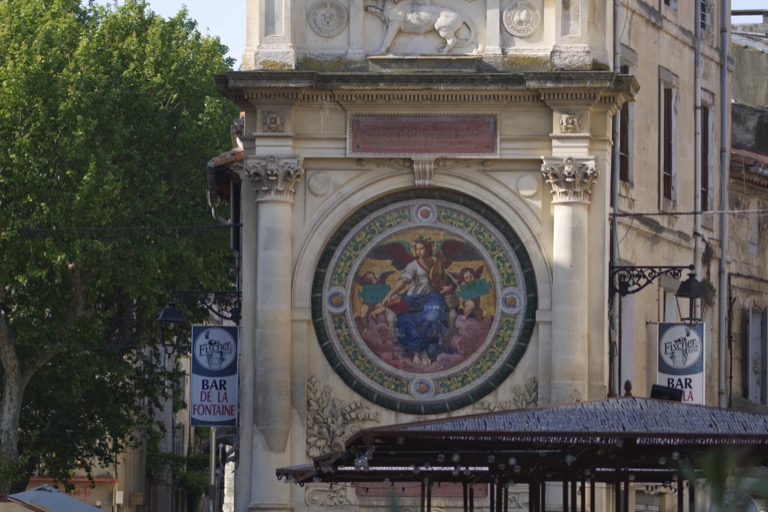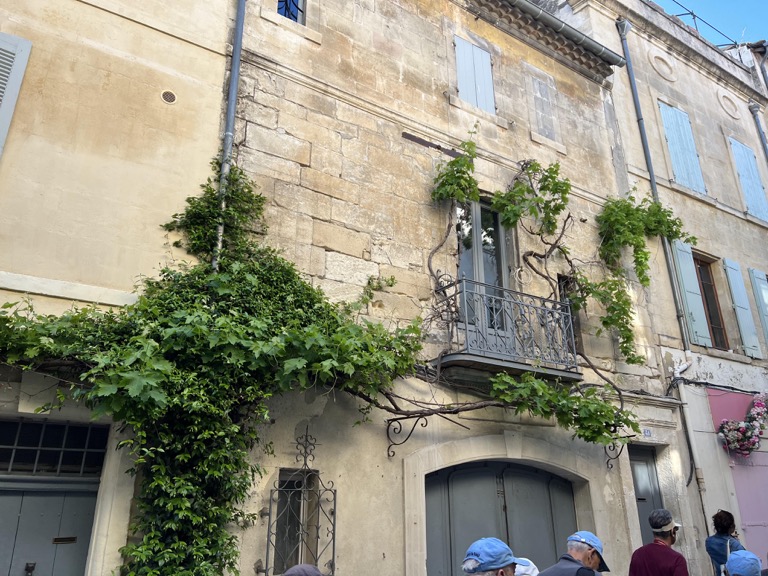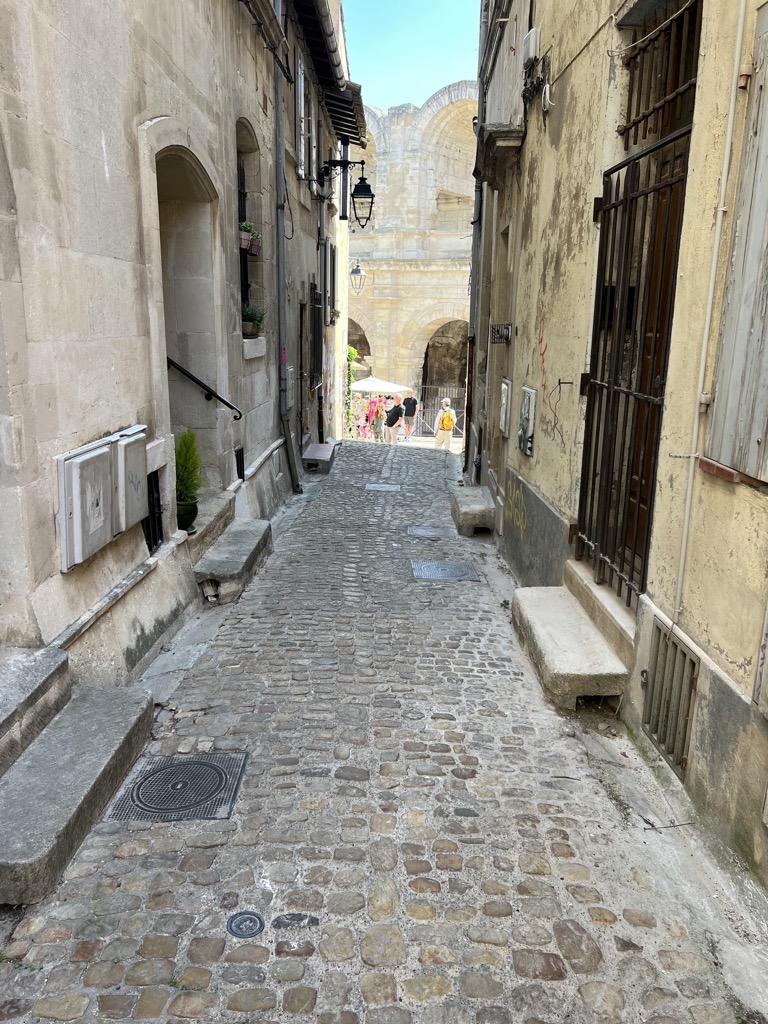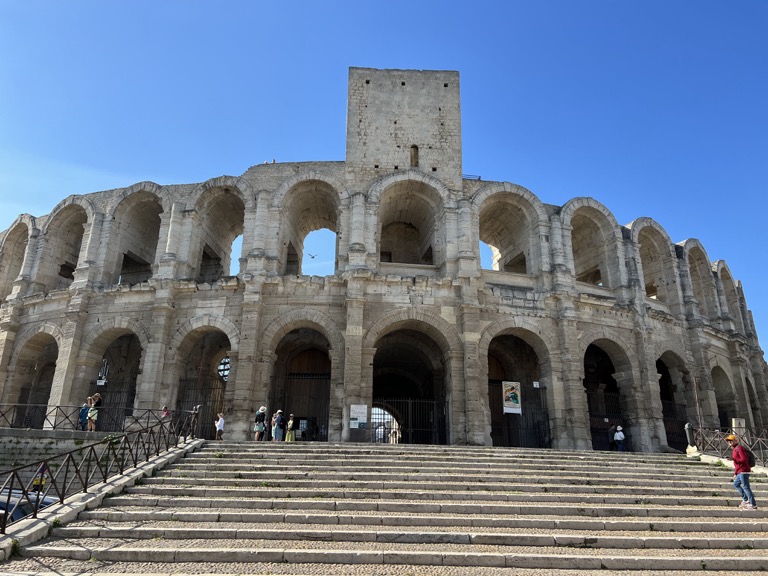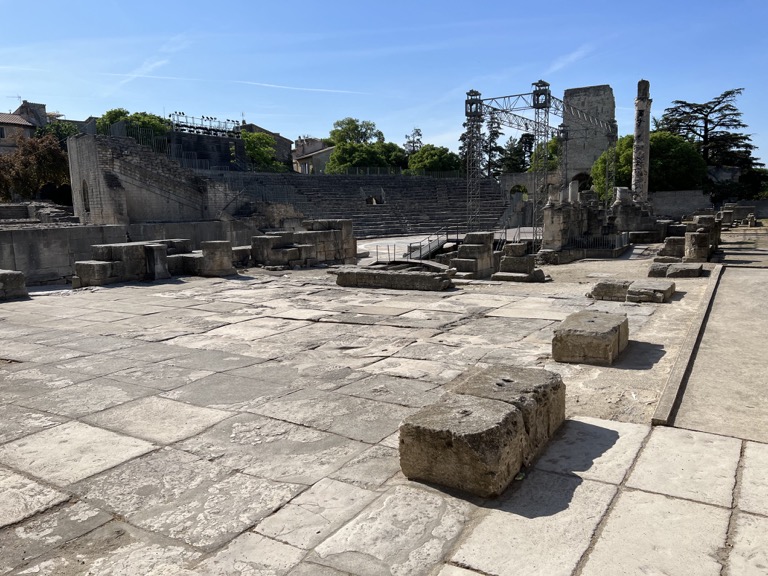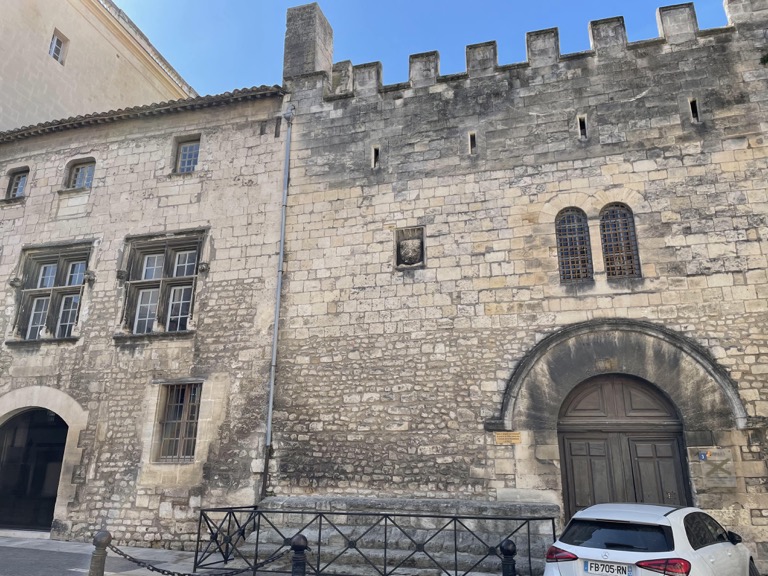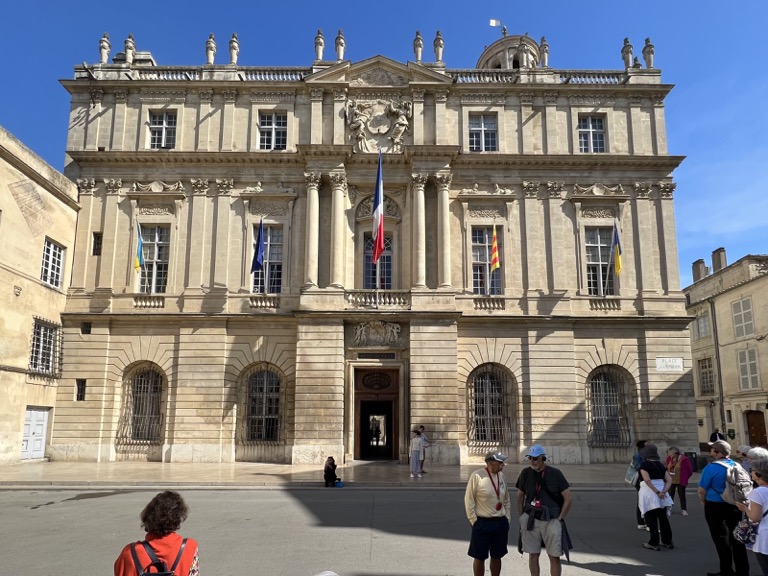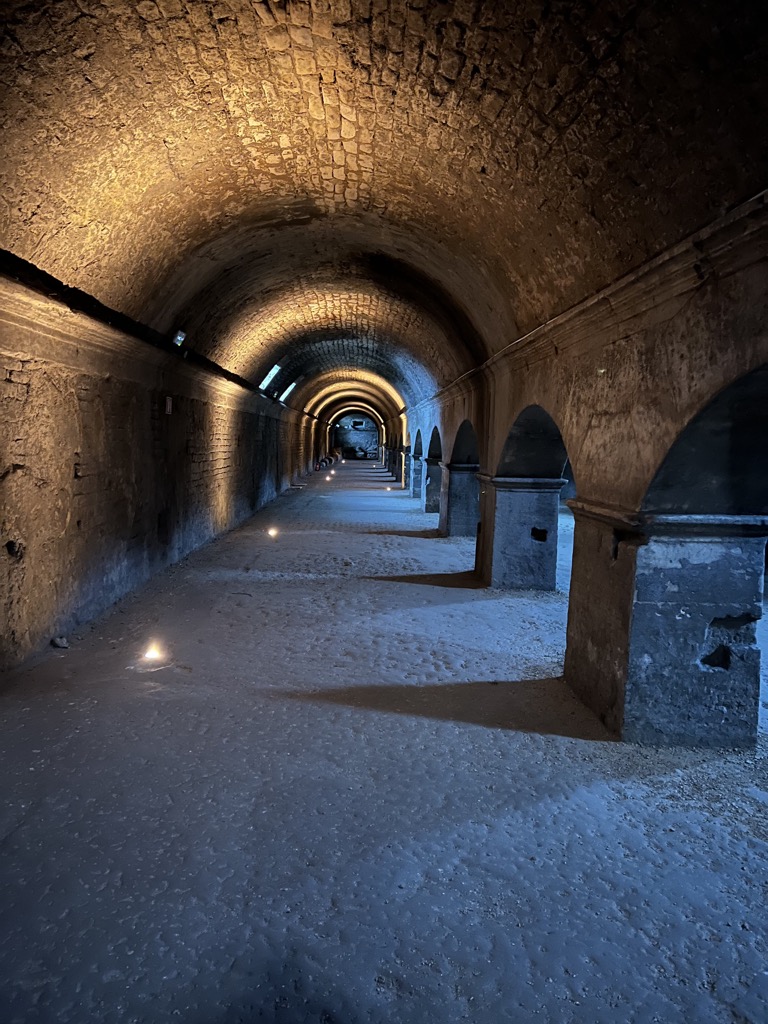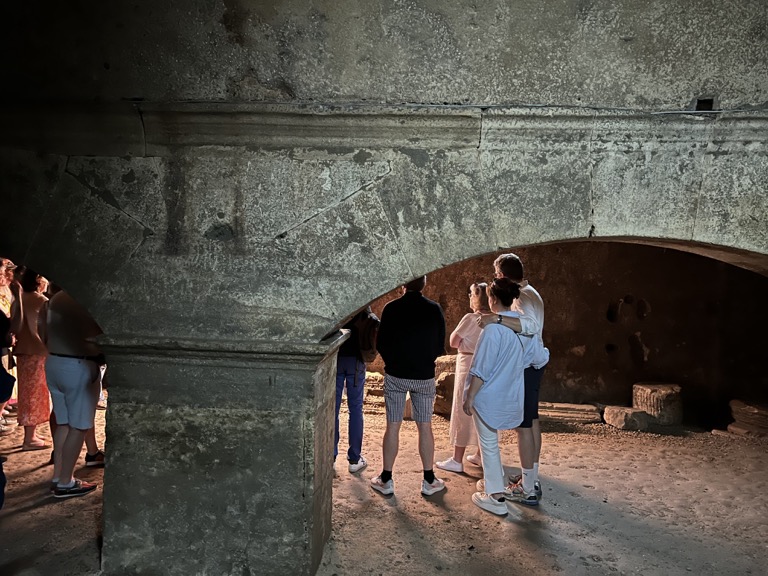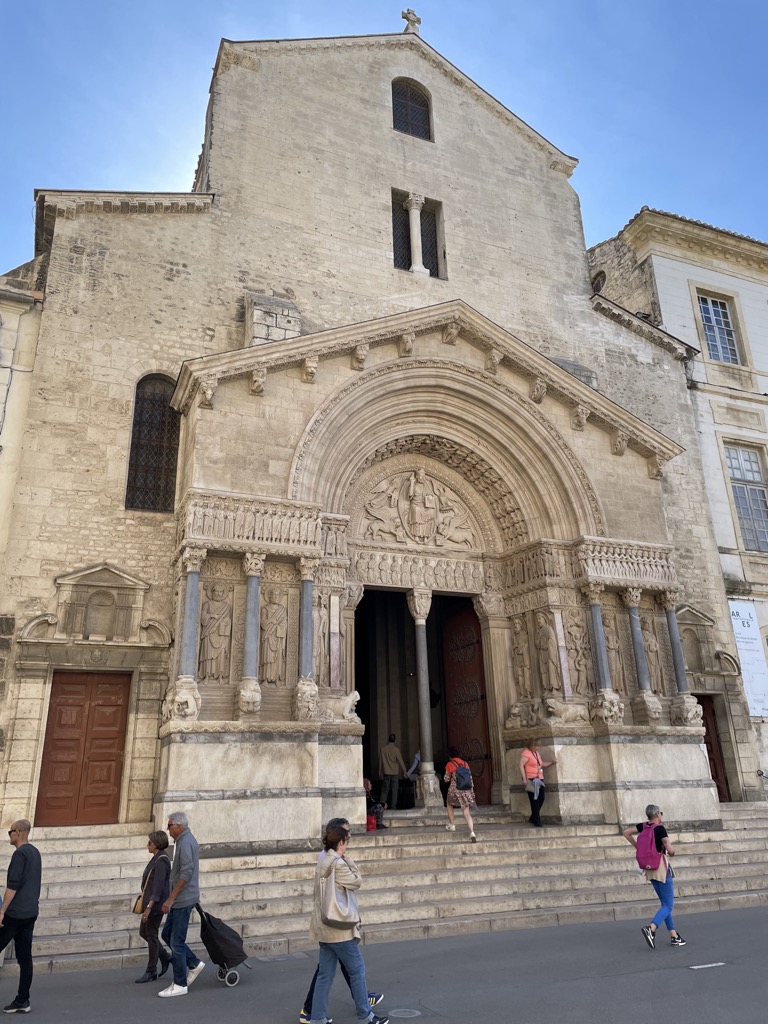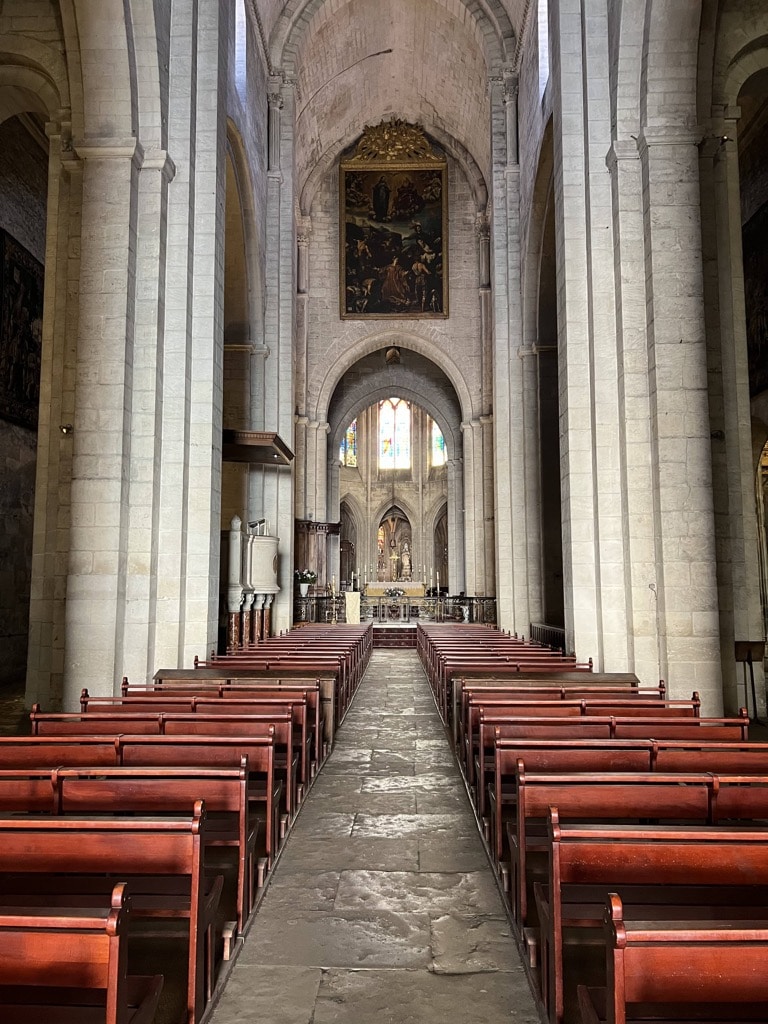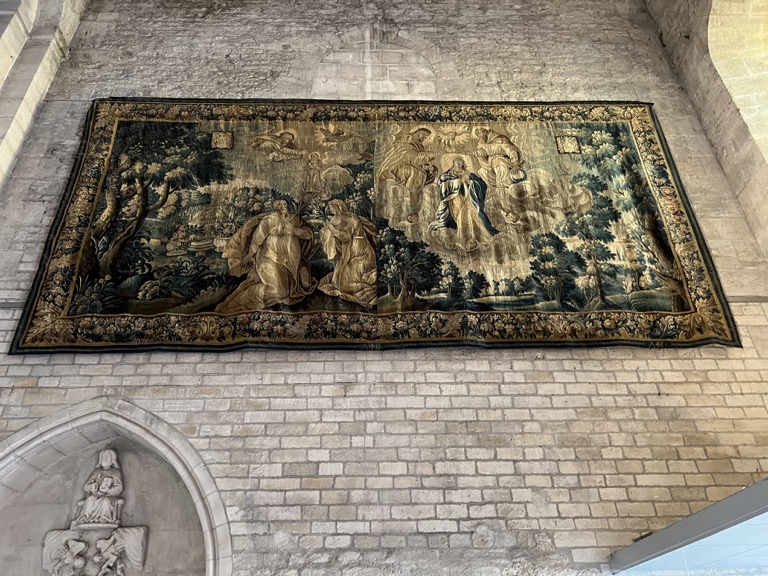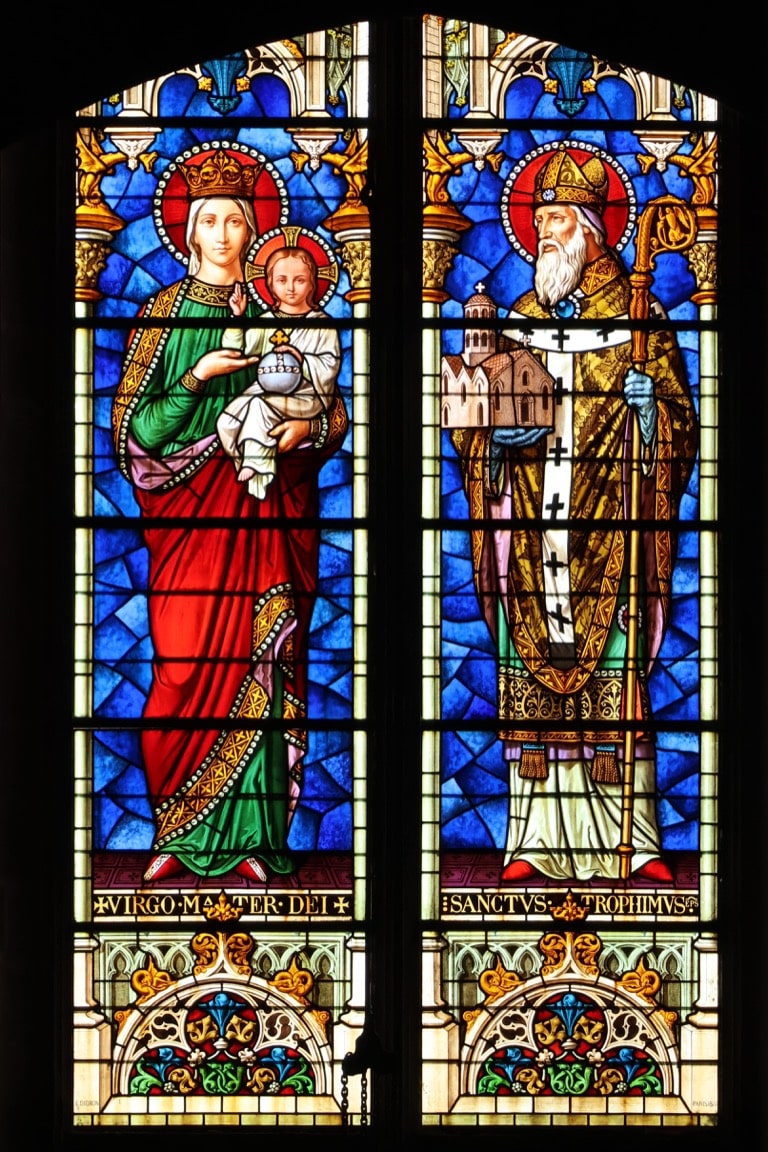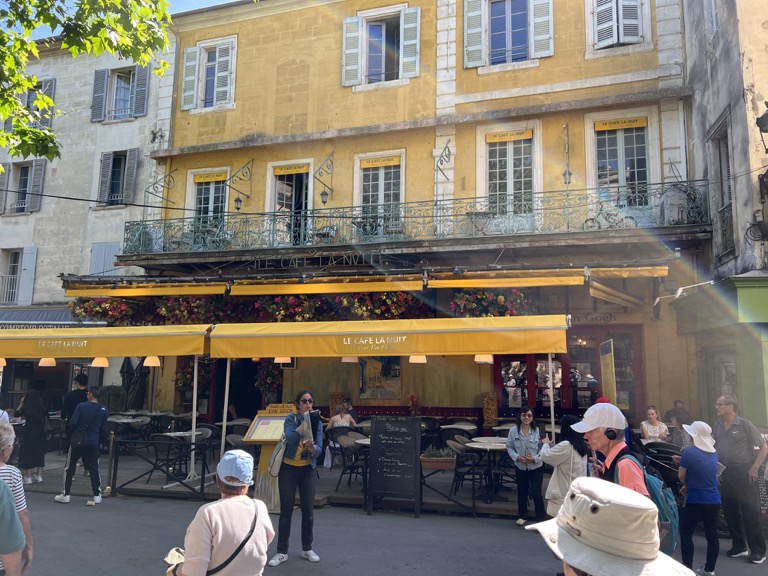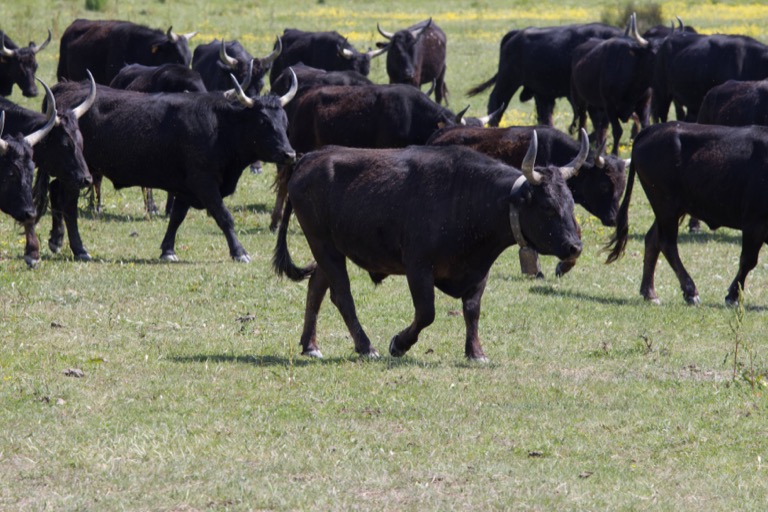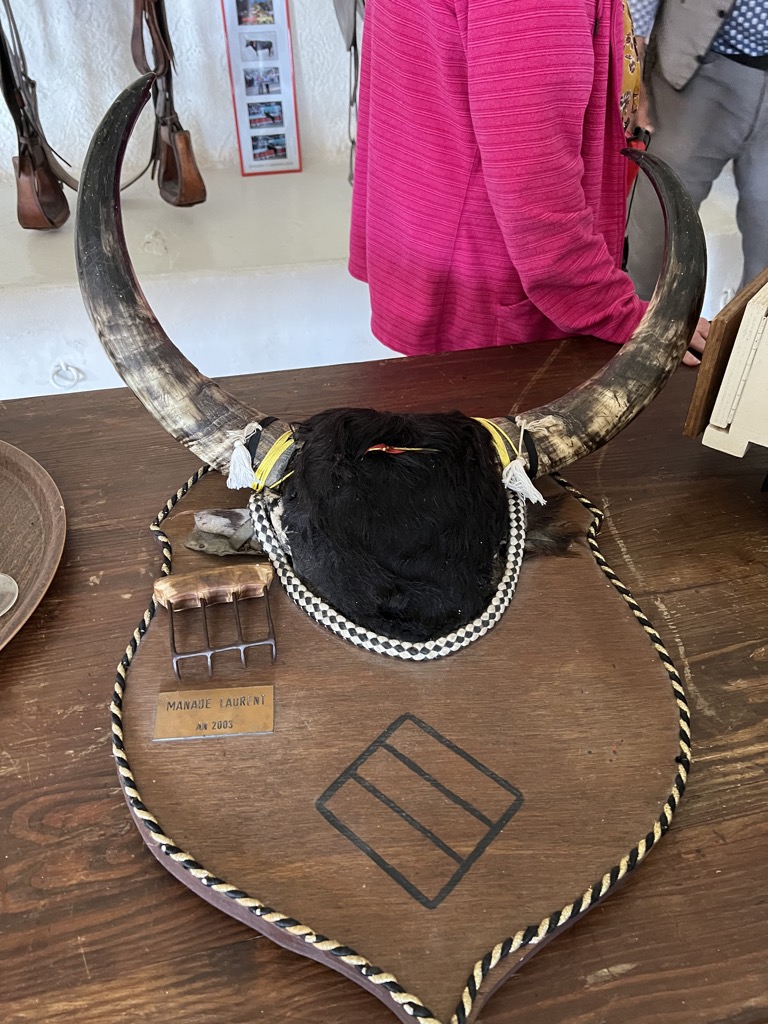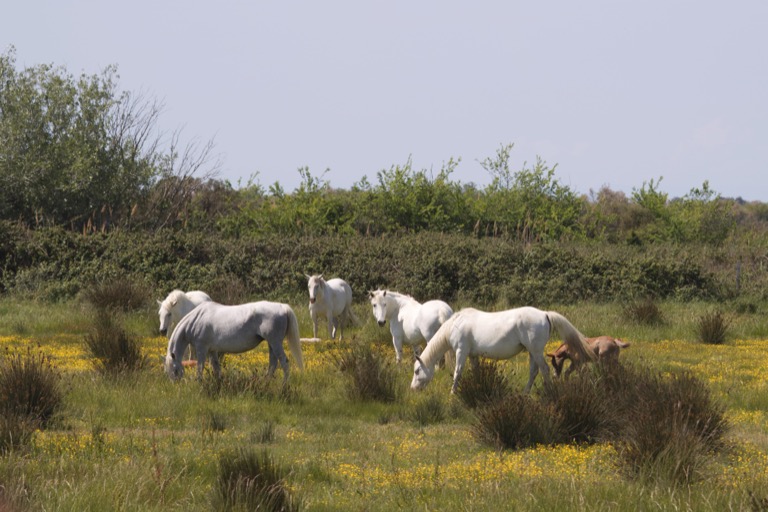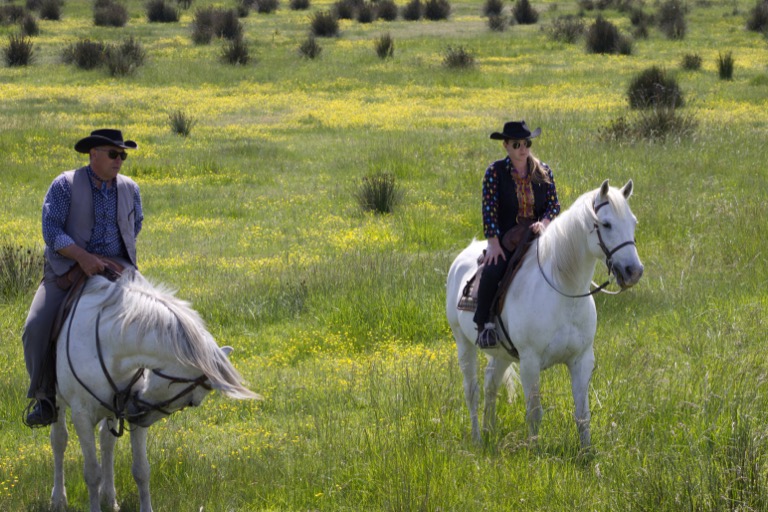on
Arles
At 9:00am there was a walking tour of Arles with a local guide. We went by the UNESCO World Heritage Sites, the Roman coliseum, theater, and the city halls from the 13th, 15th and 17th centuries.
Grape vines are used as decoration for old town homes.
The streets were made for walking, so they can be fairly narrow. This looks out at the coliseum.
The Roman Coliseum in the middle of town is a museum, and is used for concerts and bullfights.
The theater is next to the coliseum and also is still in use.
The city halls from the 13th and 15th centuries are right next to each other. The 13th century one is on the right with the arrow slits at the top. The 15th century one is on the left with more normal windows.
This is the most recent city hall from the 17th century, it actually sits on top of the old Roman forum.
The entrance to the foundations of the Roman forum is in the 17th Century City Hall. You can go down and walk through the archways of the basement of the Roman Forum. It was interesting to see the arches up close and see multiple construction techniques. This basement was used for storage when it was built.
These arches are over 2000 years old and are supporting city hall and the surrounding streets.
We also stopped at the 12th century Church of St. Trophime. Trophime was the bishop in Arles around 250 AD.
There are a number of old tapestries in it.
Van Gogh’s yellow house was in Arles, but has been torn down. The Terrace café from his painting of Terrace Café at Night is still standing, it’s right next to the old forum.
We also briefly visited the hospital where he stayed after cutting off his ear. It’s now a community center.
We returned to the boat for lunch.
After lunch, we took a bus trip out to a bull farm in Camargue. This is a form of bull fighting that doesn’t kill the bull. There are a series of ribbons attached to the bull’s head. The men try to get the ribbons, which must be done in a certain order. The spectators gamble on which men will get the ribbons (or if the bull will win by keeping the ribbons). Some of the more docile “leader” bulls wear a bell.
This shows how the ribbon is fastened to the bull’s forehead with string around the horns. The hook on the left is what the competitors use to grab the ribbon and break the string.
The farm can have as many as eight different bulls at different arenas on a single day during the busy part of the season. A given bull only competes once every three weeks. The bulls can be quite aggressive, chasing the men out over the walls of the arena. The arena functions as the betting house, and pays the men and the bull owners based on how well they do.
They also raise the Camargue white horses in this region. This farm uses them to herd the cattle.
The farm grows some grapes, taking the grapes to winemakers in the area to have wine made from those grapes. They host tour groups to bring in some extra money as well.
The farm has 1500 acres, calves weaned and branded at 7 months. Cows kept separate from bulls. Only one bull is chosen each year for breeding. The land is 8 miles from the Mediterranean Sea and is below sea level. Salt seeps into the ground naturally because of this. They irrigate from a river two miles north and grow red rice every other year. They irrigate the rice 3-4 times a week, which helps to flush the salt out. Then they pasture the other year.
We went for a walk along the river when we returned to the boat.
There was a Cognac tasting session before dinner taught by the restaurant manager.
